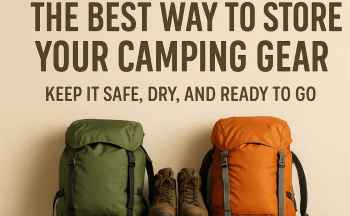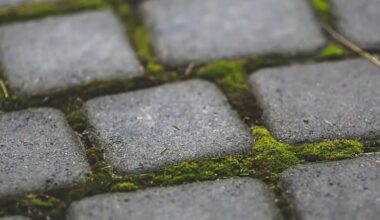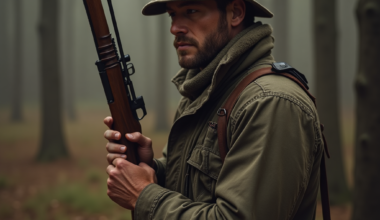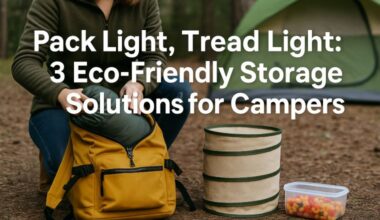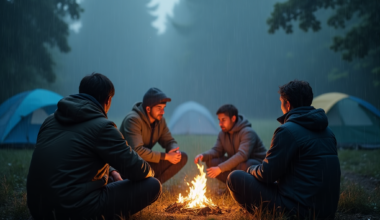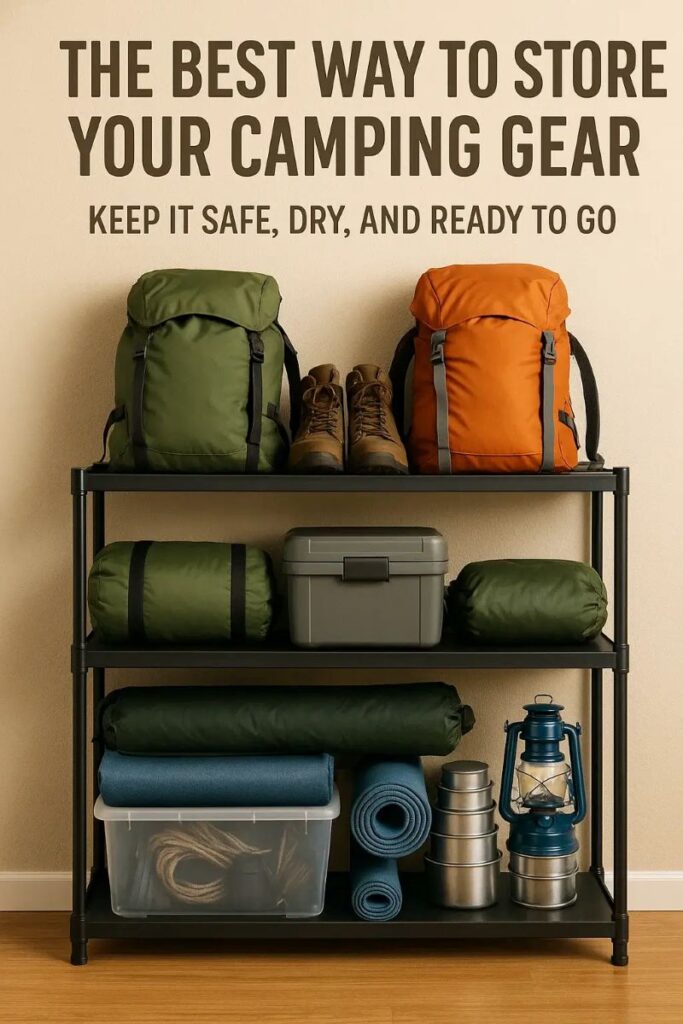
Imagine reaching into your backpack and actually finding what you need, no tangled ropes, no missing tent pegs, and definitely no crushed snacks. Sounds like a dream? It’s not!
Camping gear can be a mess if not stored correctly. Proper storage isn’t just about keeping things neat; it makes your gear last longer, stay safe, and be ready when you need it.
Nobody wants moldy tents or broken sleeping bags when they are about to hit the trail. Good storage helps you avoid clutter, pests, and damage. It also means you spend less time looking for gear and more time enjoying your trip.
In this blog, we’ll cover the key principles of camping gear storage: keeping everything dry, protected from pests, organized, and accessible. Follow these tips, and your gear will live longer and be easier to grab for your next adventure.
Why Proper Storage Matters for Camping Gear
Storing your camping gear the right way makes a big difference. Poor storage speeds up wear and tear. Dampness causes mold and mildew, pests chew holes in fabric, and humidity can rust metal parts. Experts say improperly stored camping gear can lose its quality in just a year. For example, if your tent stays damp or gets squashed under heavy boxes, it may rip or become difficult to pitch.
Many campers make the mistake of leaving gear in the trunk or tossing everything in a closet. That often leads to damage or pests. Taking the time to store gear properly saves money and makes your camping trips smoother.
Choosing the Right Storage Space
Assessing Your Available Space
Start by looking at what you have. Do you have a closet, a garage, a basement, or a shed? Measure the space to see what containers or shelves will fit. Think about how easy it is to reach your gear if the environment stays dry and cool.
If your storage area is cramped or damp, consider options like portable cabinets or plastic bins.
Ideal Storage Environments
A good storage space should be dry, cool, and well-ventilated. Avoid places that get exposed to sunlight, which can weaken fabric and fade colors. Extreme temperature swings, like in an attic, can damage gear over time.
Pests love dark, undisturbed places, so make sure your storage is pest-free. The goal: keep moisture out and airflow steady.
Specialized Storage Areas
For high-value or delicate gear, consider dedicated closets or custom-built shelves. Heavy-duty plastic bins with locking lids work great for keeping critters out. If you have lots of gear, think about investing in professional storage options or climate-controlled units.
This extra step keeps your camping gear in top shape and makes organization simpler.
Storage Containers and Organizational Tools
Durable, Waterproof, and Breathable Containers
Choose containers that block moisture but still allow air to circulate. Plastic bins with tight lids protect against water and pests. Fabric gear bags are lightweight and great for backpacks or sleeping bags because they breathe and prevent mold.
Vacuum-sealed bags are perfect for seasonal clothing or extra sleeping bags. They compress gear to save space and keep moisture out.
Shelving, Racks, and Hooks
Use sturdy shelves to stack bins. Wall-mounted hooks or racks help keep tents, sleeping bags, or backpacks off the floor. Some racks are made specifically for gear like hiking poles or tents, making setup and takedown faster.
Vertical storage maximizes space and keeps things visible and easy to grab.
Labeling and Categorization
Label every bin clearly, so you don’t have to dig through everything. Organize gear by type (tents, cooking supplies, clothes or by season. Keep frequently used items close to the front for quick access. A little upfront effort saves lots of time later.
Protecting Your Camping Gear from Moisture and Pests
Moisture Prevention Strategies
Using desiccants, like silica gel packets, absorbs excess moisture inside containers. Keep gear off the floor on pallets or shelves to avoid ground moisture. Store waterproof things in waterproof bags to add extra protection.

Pest Control Measures
Seal any cracks or holes in your storage area to stop pests. Use natural repellents like cedar chips or lavender sachets near your gear. For food storage, airtight containers prevent critters from chewing holes or getting in.
Regular Maintenance and Inspection
Set a schedule to check your gear. Look for mold, signs of bugs, or damage. Clean your camping gear before storing it away this stops odors and mold from taking hold. Regular checks keep your gear in tip-top shape for your next trip.
Best Practices for Long-Term and Seasonal Storage
Seasonal Gear Rotation
Store off-season gear separately to avoid wear. For example, keep winter gear in a different bin than summer gear. Rotate your gear periodically, so nothing gets forgotten or damaged.
Long-Term Storage Tips
Use airtight, climate-controlled containers if you plan to keep gear stored for years. Avoid stacking heavy items directly on top of delicate gear to prevent deformation or damage.
Emergency Readiness
Keep a quick-access camping kit handy. Store it near the door or in a container labeled “emergency gear.” Review your checklist often to replace worn or expired items. This will help you keep your camping gear organized so you can easily reach them when needed.
Expert and Practical Tips
Gear experts recommend regular cleaning and inspection. Invest in high-quality storage bins designed for outdoor equipment.
Modern innovations like moisture-proof containers and stackable shelving make storage easier. Keep gear organized by using clear containers so you can see what’s inside without opening everything.
Conclusion
Storing your camping gear properly is essential for safety, longevity, and convenience. Protect your investment from moisture, pests, and damage while keeping everything organized and accessible.
When your gear is stored well, camping becomes a lot easier and more fun. Take the time now to set up a reliable storage system, and your future adventures will thank you.
